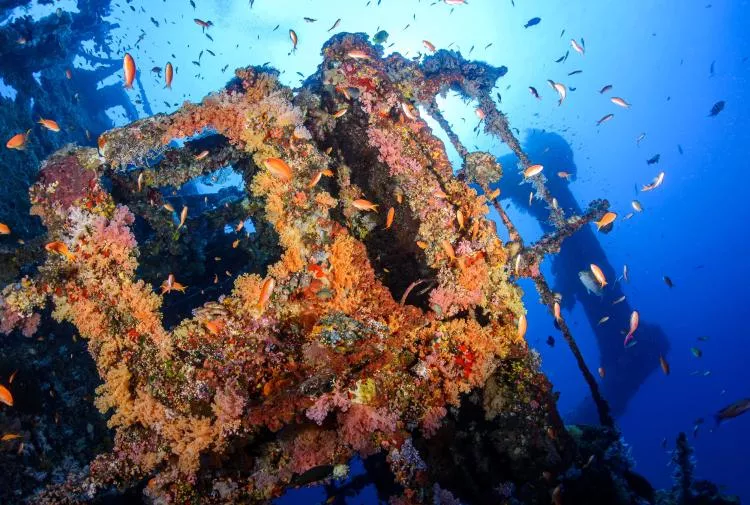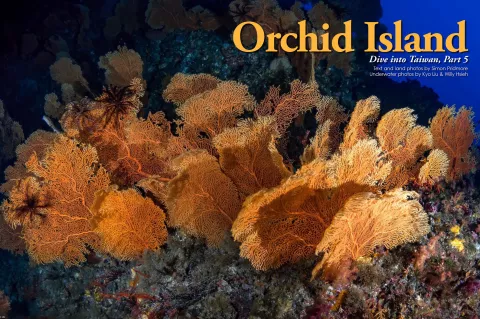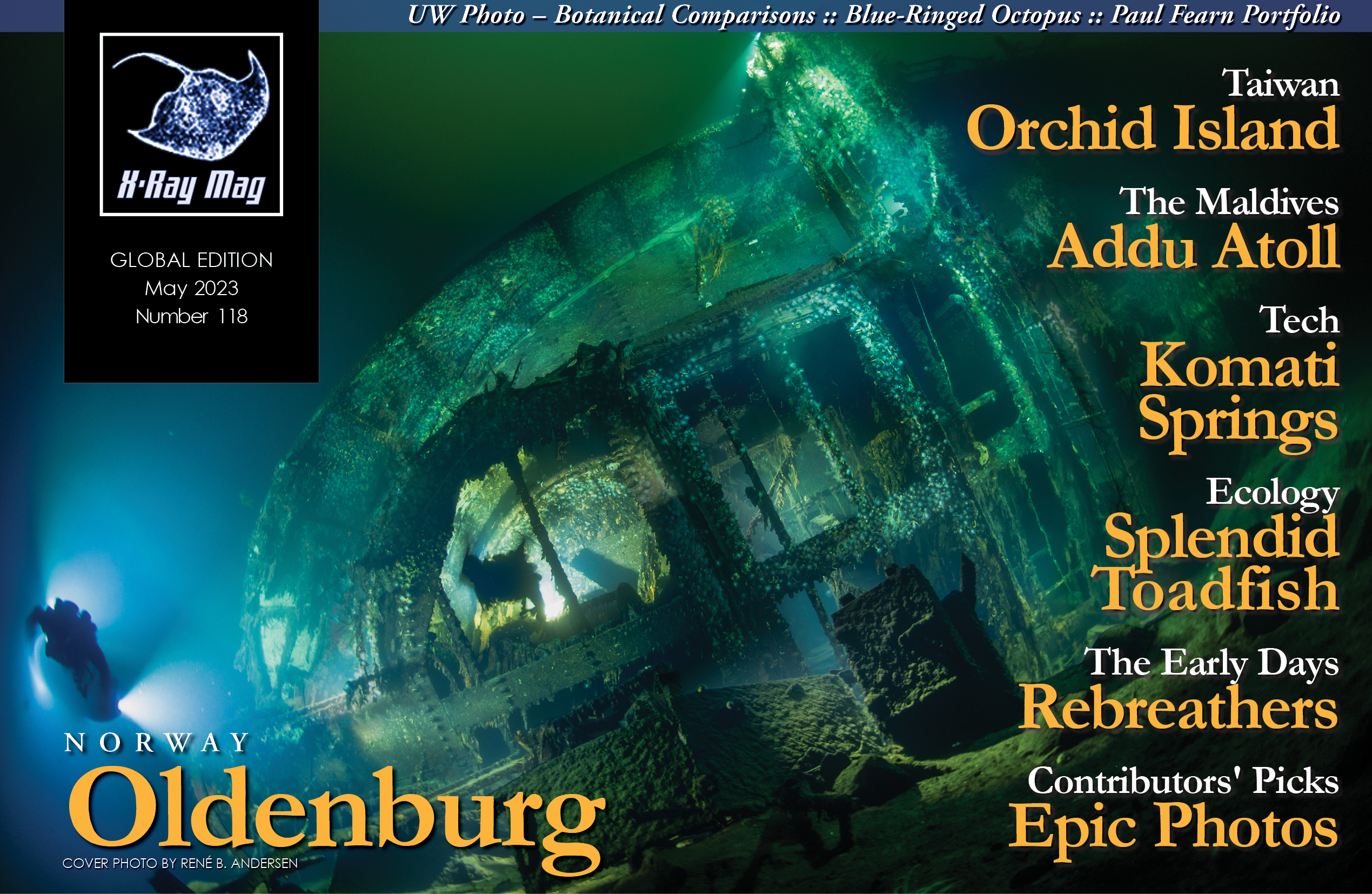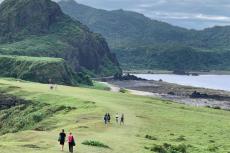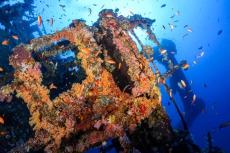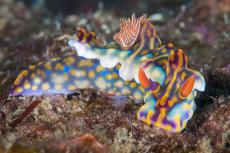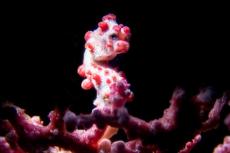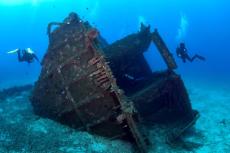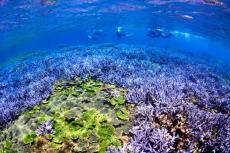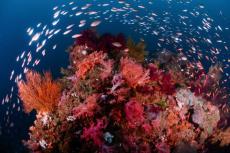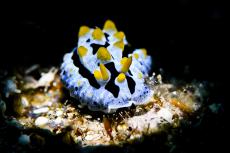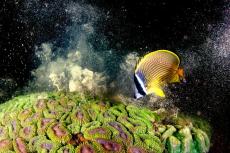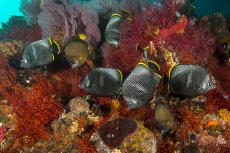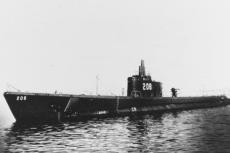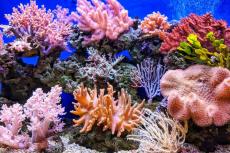Known only to few divers, a hidden treasure in Taiwan is Orchid Island, a remote and rugged outpost of volcanic origins located far from the tourist crowd, offering sublime diving for the curious adventurer who is not afraid to go off the beaten path. Simon Pridmore has the story.
Contributed by
Taiwan is a group of Pacific islands surrounded by warm tropical seas. It is easy to get to and get around and it is a first-world society with outgoing, friendly, laid-back people. Taiwan has some very good scuba diving and a network of dive centres and resorts with first-class professional staff, equipment and services. They offer scuba experiences, basic training courses and fun diving for a young, enthusiastic first generation of Taiwanese divers.
Yet, when divers elsewhere in the world think about diving destinations, Taiwan is unlikely even to be a blip on their radar screen. Very few people outside Taiwan have ever thought to enquire about the diving there, and very few people inside Taiwan have ever thought to tell anyone about it. Until a couple of years ago, that is, when some far-sighted folks asked me and Taiwanese underwater photographer Kyo Liu to write a book.
The book is called Dive into Taiwan, and this is the fifth in a series of six articles, each covering one of Taiwan’s diving regions, designed to give you a flavour of what to expect from a Taiwan dive trip. The book covers much more than diving. It talks about the people, culture, countryside, cities, food and lifestyle to give readers a fully immersive experience—diving into Taiwan in every way. But in this series, I will just focus on the underwater attractions, with the help of Kyo’s amazing photographs.
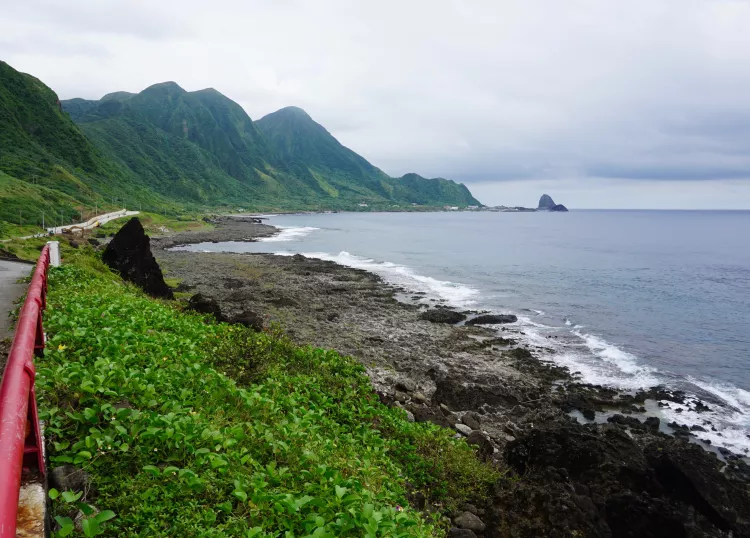
The island
Orchid Island or Lanyu is the jagged, battered remnant of a long-extinct volcano and the sole homeland of the Tao people. It is a wild place: a land of coastal volcanic plains, tall, windswept, emerald-green cliffs, and an almost impassable highland interior. Ancient lava flows slope down towards the ocean, where they merge with fringing coral reefs to create the topography that so fascinates visiting divers. The scenery is reminiscent of other geologically turbulent, edge-of-the-world places like Iceland.
But this is indubitably a Pacific Island, and the Tao are Pacific islanders. The men fish and build houses and boats, while the women plant taro and weave, just as they do throughout Micronesia and beyond. Like many island peoples, they have developed a unique, fascinating culture based on the world around them. The surrounding seas are the hub of the Tao universe and the most important creatures in the ocean and the focus of the Tao religion are flying fish.
Orchid Island is a far-flung frontier even for the Taiwanese, and it sees far fewer divers than Taiwan’s other scuba hotspots, with the exception of South Penghu. There are two main reasons for this. First, the diving infrastructure here is less well-developed than on Green Island (60km to the north). Second, the island’s remoteness makes coming here for a diving weekend more difficult and expensive than easily accessible options like Hengchun and the Northeast Coast.
Few divers outside Taiwan know of Orchid Island and many of those that have dived here over the years just discovered it by chance. They came to the island to see the Tao culture and decided to add a little diving to their holiday activity mix when they saw how clear and blue the ocean was.
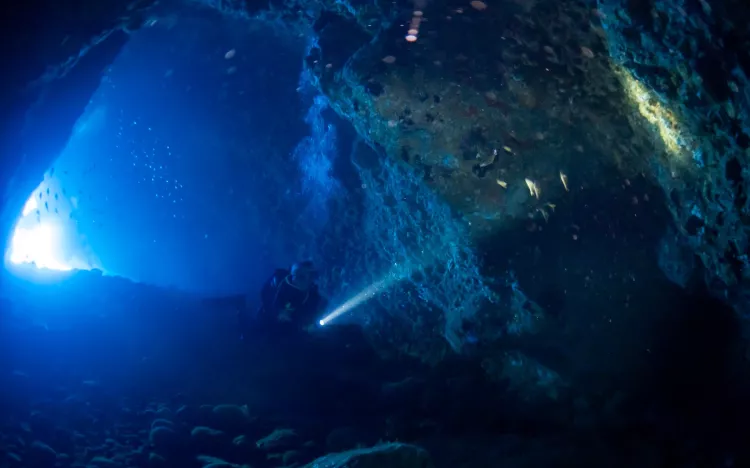
Key dive sites
The best dives on Orchid Island are the Badai Bay Wreck and Airport Perimeter Reef, two sites close to each other off the southwestern coast. Boats to these sites usually leave from Longmen Port in the south. The ride takes you past jagged black lava walls where goats pose perilously poised, peeking down at the surf below. Behind, the green mountains rise through drifting wisps of morning mist.
Badai Bay Wreck. The wreck, named after the bay where it now lies in three pieces at 40m, was a Korean freighter that broke up and sank in bad weather in 1983. It is now completely covered in corals, including some large sea fans, and is home to many fish. A fixed line runs from surface buoys to the stern, the largest and most entertaining section of the wreck. It sits at an acute angle to the seabed and its tall loading mast is the wreck’s shallowest point at 20m.
The visibility is usually good enough here to allow you to see the entire wreck laid out below as soon as you begin your descent. There is often a current running, so be prepared to use the fixed line to get up and down. The stern and its superstructure are quite open and there are some easy swim-throughs that take you inside the ship, among the swarming glassfish and groups of larger inhabitants that lurk in the semi-darkness, such as yellow goatfish, yellow snapper, batfish and squirrelfish. There are some big yellow sweetlips and spotted sweetlips skulking in there too.
The other two sections of the wreck are the main freight deck and the bow section. The deck is flat on the seabed and there is not much there, except a little turtle that lives underneath it. The bow section sticks straight up from the sand and there are a few fish hanging around, but nothing like the population that lives on and inside the stern. The view from the bow of the entire vessel laid out before you is quite spectacular though.
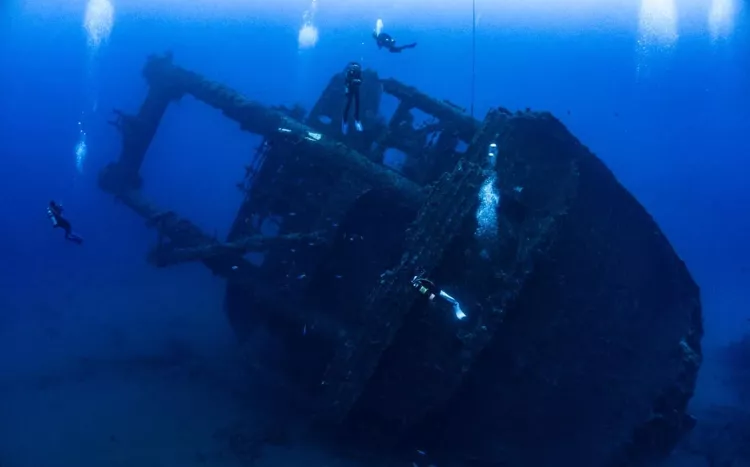
Airport Perimeter Reef. Not far away, at the northern end of Badai Bay, is Airport Perimeter Reef. Expect stunning visibility here too. The entry point is the pinnacle that breaks the surface just offshore from the airport runway. This is an especially fishy site with plenty of fusiliers, surgeonfish and barracuda in particular. When the current is running here, as it often does, the water movement encourages the schools of fish to assemble in tighter groups, which is perfect for photographers looking for wide-angle shots.
Large, perfectly formed gorgonian sea fans of various hues and carpets of luxuriant yellow soft corals adorn the tumble of underwater pinnacles and bommies. The fusiliers zip around your head as you peek down into fan-filled crevices, red soldierfish dip in and out of cracks in the rocks and there are angelfish all over the place, adding even more colour to the scene. On the seabed at around 30m are several copses of tall, pale sea whips, giving the site an otherworldly look. Look out also for pufferfish, porcupinefish and several different types of sweetlips. It is a fine dive and, together with the Badai Bay shipwreck, gives divers a two-tank dive to rival anything found in far more celebrated diving destinations elsewhere.
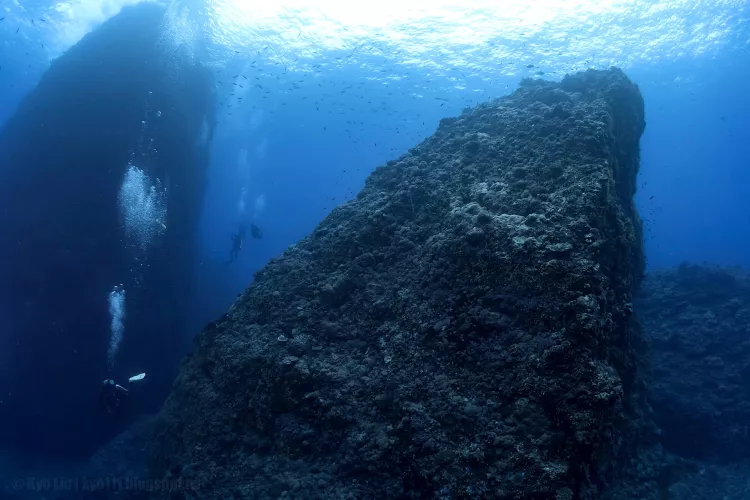
Warship. For some of the best diving in the north, take a boat out of Dongqing Port and head for the northeastern corner of the island, where massive chunks of lava jut up from the ocean. One of these rocks is called Warship, apparently because, during World War Two, the row of jagged pinnacles and spires looked enough like a large boat from the air for American aircraft hunting for Japanese ships to drop bombs on it.
As you leave Dongqing, massive central cliffs lour over the coastal plain of lava behind you. Ahead lies the vast Pacific. The topside topography of the Warship rocks is repeated underwater, with a pattern of pinnacles and spires. You descend and swim out to sea and back again, making the transition from peak to peak, the excellent visibility allowing you always to perceive the next mountain in the series from the previous one. Each one is initially just a vague shape in the distance but, as you approach, it looms into clearer view, the definition improves and then, suddenly you are upon it. The experience is just as dramatic as it sounds.
The best way to dive the site is to go deep as you head out along the line of pinnacles, staying close to the sand and exploring canyons and smaller bommies on the seabed along the way. You should not dawdle on the way, as your aim is to reach the highlight of the Warship dive before you run out of no-decompression time. This highlight is a mass of fabulous sea fans, yellow to the naked eye but orange in the glare of a video light, which have grown in profusion in a narrow crevice between two bommies at a depth of around 30 to 36m. The sand here is at 40m, which is where you need to be to get the shot from below the fans growing in terraces up the side of the cliff.
At this point, your guide will usually turn the dive and take you back the way you came but via the “mountain tops” this time. This will involve you making jumps through blue water between the pretty reefs that have colonised the sections of pinnacle that receive the most sunlight. On a blue-sky day, from mid-morning onwards, these coral gardens will be glowing with clouds of small reef fish milling about and sparkling and shimmering in the sun.
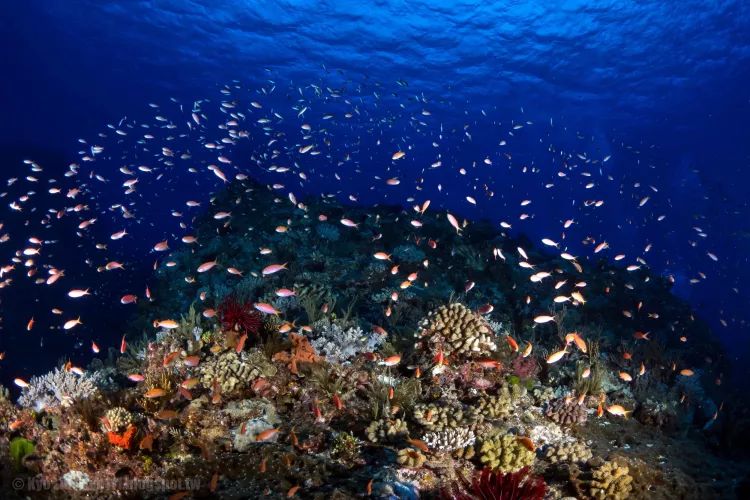
Lady Rock. At Lady Rock on the northwestern coast, there is another “mountain hopping” dive, similar to Warship, but shallower. This is a shore dive at the end of a short path that leads down from the road. Underwater, the series of pinnacles heading out to sea is riddled with a maze of canyons. One of the highlights of the dive comes early, with a long sea cave full of copper sweepers swarming around in the near-total darkness. You will need a dive light to get the most out of this site, even in the daytime.
At depth, inside the canyons, sea snakes are abundant, and they are the major attraction. The final pinnacle in the line-up bottoms out at 30m and this is usually where you will turn the dive. As at Warship, the best way to go back is to swim slowly up to the top of this last mini-mountain and then “island hop” your way back across the others, stopping at each to watch the wonderful collection of marine animals that has assembled at the top of each pinnacle. This is where most of the life is: anemones, schooling reef fish, hawkfish poised on coral stands and cleaner wrasse working hard to service a never-ending queue of customers. With the excellent visibility, if you look down as you pass from peak to peak, you will see the sand far below and feel like you are flying.
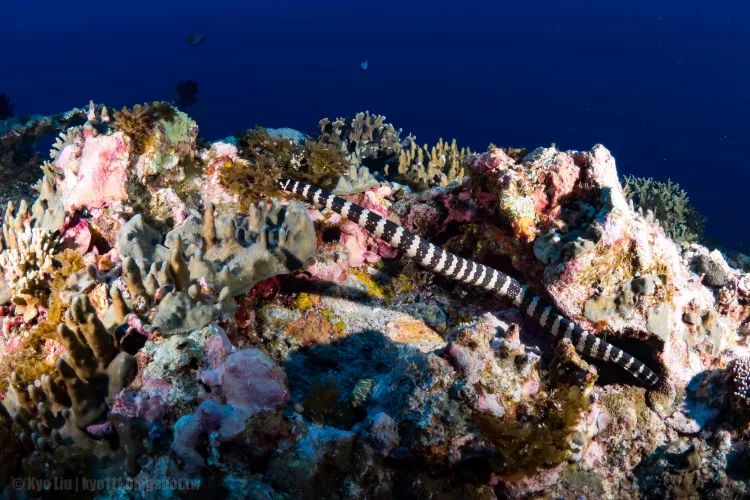
Dive operators
Blue Ocean House (BOH) Resort in Hongtou village began life as a guesthouse 20 years ago. In those days, owner Chan Ge would take people diving as a freelance operator but, 10 years ago, he opened a well-equipped, full-service dive centre and expanded the accommodation. Find them online at boh.com.tw and facebook.com/LANYUBOH.
Harry Lin worked in diving in Palau for 15 years before coming to Orchid Island and runs Tec Only in Langdao on the northern coast. Contact Harry on +886-921345376. He works with Langdao guesthouses MingMing and Among.

